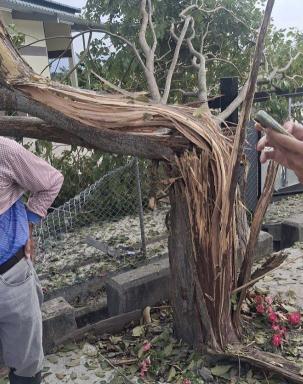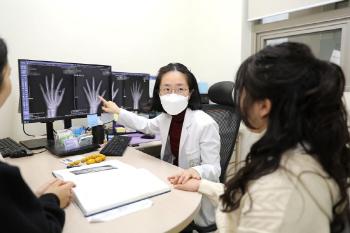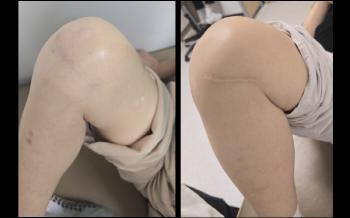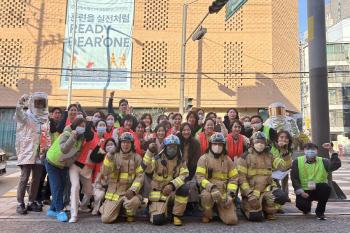Idiopathic pulmonary fibrosis where lung tissue hardens like a scar...Early symptoms are similar to colds and asthma
|
Recently, the number of patients is steadily increasing due to the increase in the elderly population and the activation of health checkups. Idiopathic pulmonary fibrosis is a chronic progressive lung disease in which normal lung tissue hardens like a scar, making it difficult to exchange oxygen.
Among the various types of interstitial lung diseases, the prognosis is poor, and it is known that the average survival period is about 3 to 5 years if treatment is not received after symptom onset.
The word ' idiopathic' means that the cause is unknown, and no clear cause of the outbreak has been identified so far. It occurs mainly in the elderly aged 60 or older, especially men and smokers. In addition, ▲a family history of pulmonary fibrosis or mutations in certain genes ▲ occupational exposure to metal powder, wood, mold, and dust ▲ gastroesophageal reflux disease is known to be related to the onset.
The initial symptoms are that a dry cough without phlegm lasts for more than a few weeks, and if it progresses a little more, you will be out of breath even with mild exercise and will have difficulty breathing. At first, it is easy to misunderstand it as a cold or bronchitis, but it gradually complains of shortness of breath and fatigue even when walking on flat land, which interferes with daily life. At the end of the year, symptoms worsen to the point where you need to receive continuous oxygen supply.
Professor Park Sung-woo of the Department of Respiratory Allergy at Soonchunhyang University Bucheon Hospital said "Ipatic pulmonary fibrosis is easy to overlook because its initial symptoms are similar to common respiratory diseases such as colds, asthma, and chronic bronchitis. Already damaged lung lesions do not recover, so early diagnosis and treatment are of paramount importance."
For diagnosis, lung function tests and high-resolution chest CT tests are performed. If necessary, lung biopsy through bronchoscopy or surgical lung biopsy through thoracoscopy may be performed. When it is necessary to differentiate it from other interstitial lung diseases, the accuracy is increased through multidisciplinary diagnosis by various experts such as respiratory medicine, rheumatology, radiology, and pathology.
Currently, there are two antifibrotic treatments that have been recognized for their effectiveness: 'Firpenidone' and 'Nintedanib'.
By slowing the progression of lung fibrosis and reducing the rate of lung function reduction by 50%, it is known to increase the expected survival period. However, regular checkups and side effects management are essential as side effects such as nausea, diarrhea, loss of appetite, and liver dysfunction may occur. Recently, new antifibrotic treatments with reduced side effects and increased effectiveness have been actively developed at home and abroad.
If the disease worsens rapidly despite medication, lung transplantation is considered. However, it is a limited treatment method because donor lungs are insufficient compared to the number of people waiting for organ transplantation, and the risk of complications from transplantation is high in the elderly.
Life management is also important to slow the progression of idiopathic pulmonary fibrosis. Smoking cessation is basic, and flu/pneumococcal vaccination can prevent pneumonia or acute exacerbation of pulmonary fibrosis due to infection. Even if you're out of breath, it's better to keep doing light exercise to the extent possible. It is helpful to avoid environments with a lot of fine dust and use air purifiers indoors.
Professor Park Sung-woo said "If chronic cough or shortness of breath persists for more than two weeks, you should visit a hospital for treatment. In particular, regular lung checkups are required for occupations over 55 years of age, smoking history, lung disease in the family, or exposure to dust"If idiopathic pulmonary fibrosis is initiated early and managed steadily, it can slow down the deterioration of lung function as much as possible and allow daily life."
|
This article was translated by Naver AI translator.





